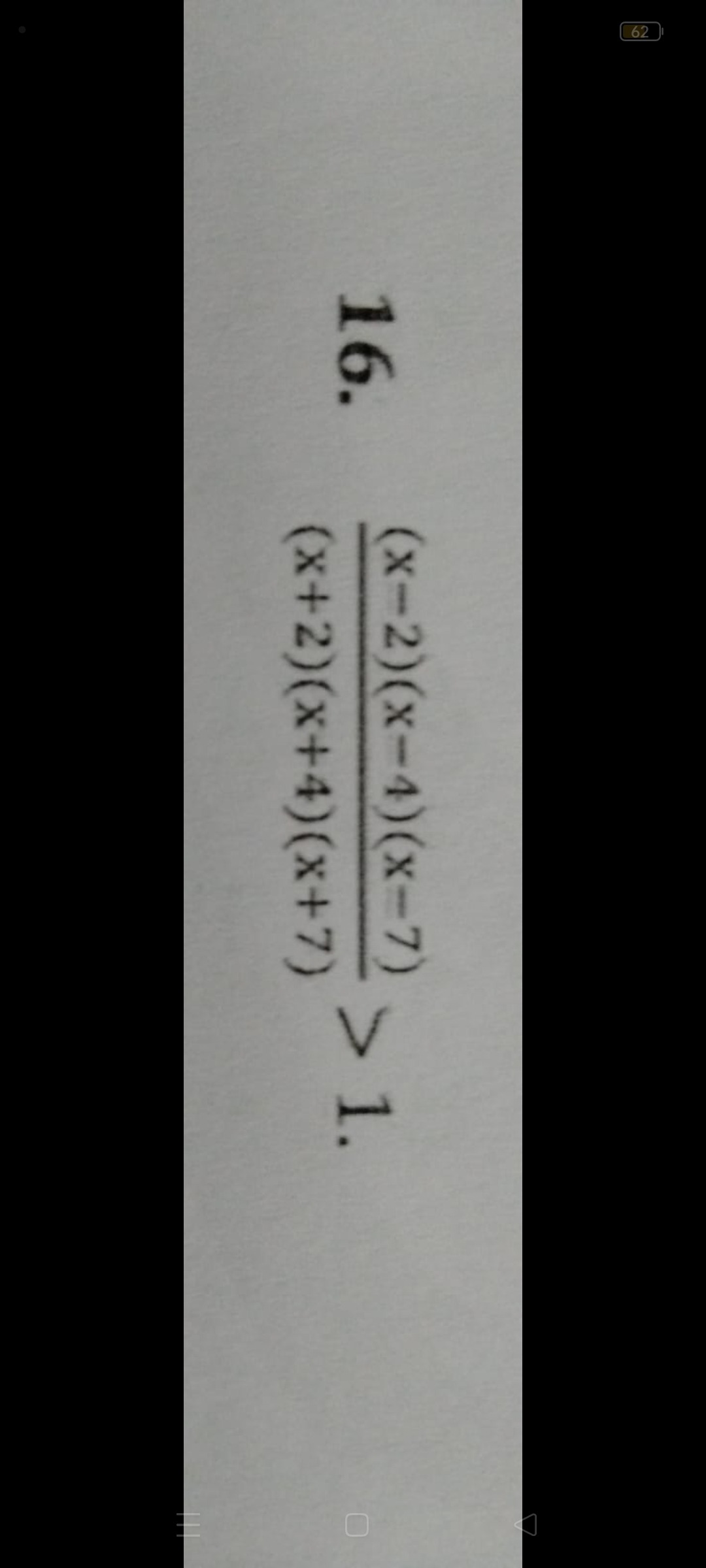Question
Question: $\frac{(x-2)(x-4)(x-7)}{(x+2)(x+4)(x+7)} > 1.$...
(x+2)(x+4)(x+7)(x−2)(x−4)(x−7)>1.

(−∞,−7)∪(−4,−2)
Solution
To solve the inequality (x+2)(x+4)(x+7)(x−2)(x−4)(x−7)>1, we first rewrite it as:
(x+2)(x+4)(x+7)(x−2)(x−4)(x−7)−1>0
Combining the terms on the left side gives:
(x+2)(x+4)(x+7)(x−2)(x−4)(x−7)−(x+2)(x+4)(x+7)>0
Expanding the numerator:
(x+2)(x+4)(x+7)(x3−13x2+50x−56)−(x3+13x2+50x+56)>0
Simplifying the numerator:
(x+2)(x+4)(x+7)−26x2−112>0
Since −26x2−112 is always negative, we need the denominator to be negative as well:
(x+2)(x+4)(x+7)<0
The roots of the denominator are x=−7,−4,−2. Testing intervals:
-
x<−7: (x+2), (x+4), and (x+7) are all negative, so the product is negative.
-
−7<x<−4: (x+2) and (x+4) are negative, (x+7) is positive, so the product is positive.
-
−4<x<−2: (x+2) is negative, (x+4) and (x+7) are positive, so the product is negative.
-
x>−2: All factors are positive, so the product is positive.
Thus, the solution is x∈(−∞,−7)∪(−4,−2).
